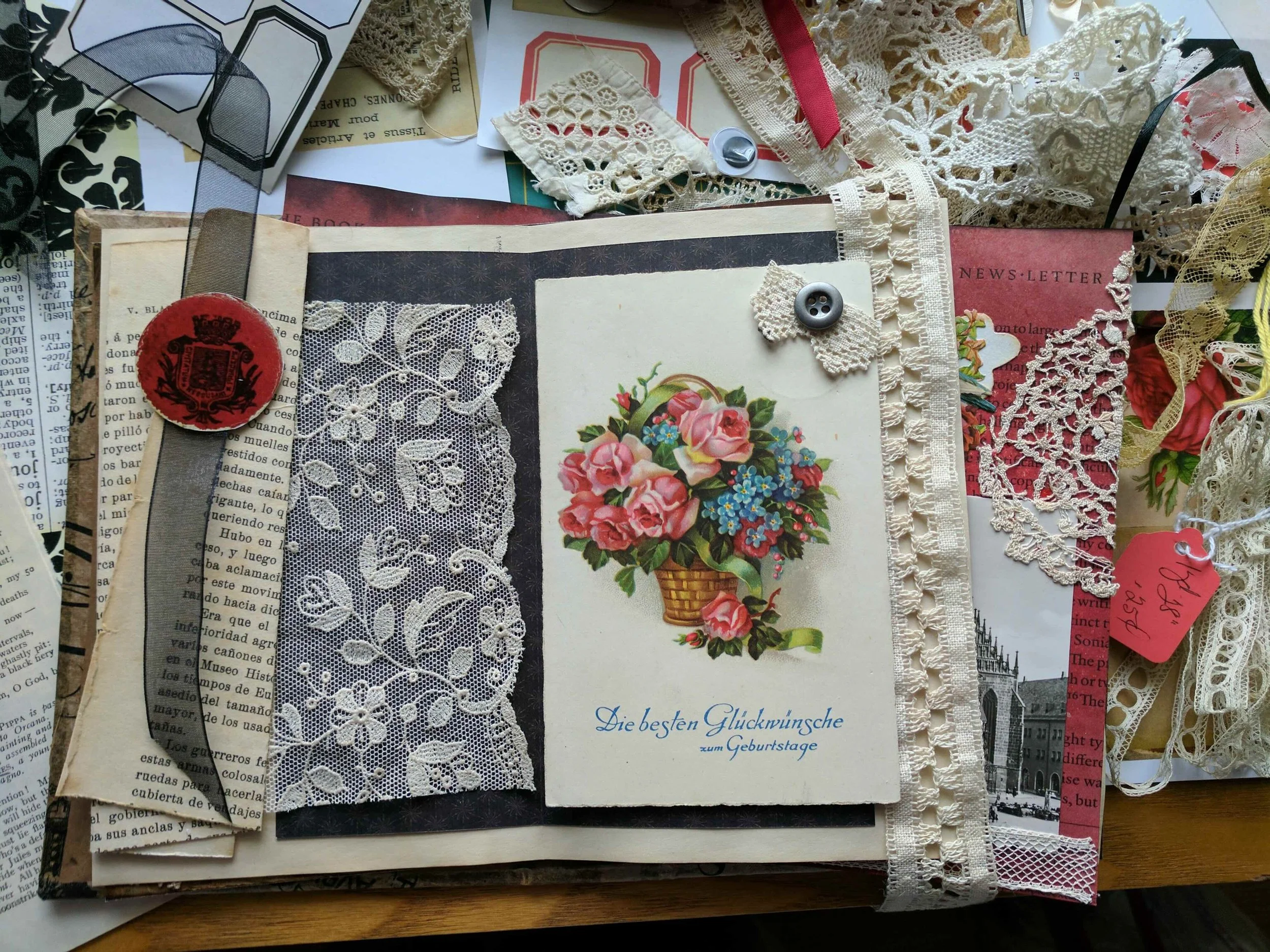What I wish I knew as a junk journal beginner
Junk journaling is more than just crafting—it's a way to preserve memories, express creativity, and transform ordinary scraps into something extraordinary. If you're new to the world of junk journals, it’s normal to feel unsure where to begin. I’ve got some advice that I wish I had been aware of when I started out that I hope you’ll find useful. It’s practical advice and reassurance to help you on your own junk journal journey.
1. Understand what a junk journal really is
At its core, a junk journal is a handmade book created using recycled, repurposed, or secondhand materials. Think old book pages, food packaging, greeting cards, and paper scraps. These journals are often filled with writing, collage, and mixed media art. The term "junk" can be misleading—it's not about trash, but about giving overlooked materials a second life. Once you realize there's no one “right” way to make a junk journal, the pressure to “do it correctly” fades, and the fun begins.
2. You don’t have to use actual junk
One common myth is that everything in a junk journal must be secondhand. Not true! While reusing materials is a big part of the appeal, there’s nothing wrong with using digital printables, scrapbook paper, or ephemera you've purchased—especially if they inspire you. If buying a printable space-themed kit on Etsy helps you bring your vision to life, go for it. Your journal should motivate you to create, no matter the source of your supplies.
3. Start small before you go big
Many beginners get overwhelmed by trying to make a huge, intricate journal from the start. A better approach? Focus on small, simple projects that let you explore one aspect at a time—maybe a journal with just a few pages or one that focuses only on cover design or collage techniques. This helps you build skills without the pressure of finishing something massive.
4. Pre-planning can save you stress
Before you jump in, take a moment to plan. Choose a theme, think about the colors or materials you want to use, and take stock of what you already have. This keeps your project intentional and manageable. It also helps prevent the classic beginner mistake of starting with big ambitions, then feeling overwhelmed halfway through.
5. Junk journaling is a playground for experimentation
There are no rules! Don’t be afraid to test different methods of binding, layering, or decorating. Try a new stitch, use unusual materials, or challenge yourself to create a page with only what’s on your desk. These little experiments help you discover your personal style and grow your confidence.
6. Sewing isn’t required (really!)
Many beginners think they need to learn complicated binding stitches right away—but you don’t. There are many simple alternatives like using ring binding, long-arm staplers, or hole punches with ribbon or twine. These methods are faster and more approachable, especially if you’re still getting comfortable with the process.
7. Creating the journal is just step 1
Once your journal is made, a new question arises: what goes inside? Some people use their junk journals for writing, others for gluebooking, scrapbooking, or art journaling. Realizing that content creation is its own process helps separate the tasks and avoid overwhelm. It also gives you permission to slow down and enjoy each part fully.
8. You can revisit a journal again and again
A junk journal doesn’t need to be finished in one sitting—or ever. You can add to it slowly over months or even years. Maybe you create a journal with a color theme, like red, and come back to add red scraps whenever you find them. This flexibility makes each journal feel like a living, evolving creation.
9. Gift your journals with care
While giving a handmade journal may seem like a thoughtful gift, not everyone will understand what it is or how to use it. If you’re gifting a journal, take the time to explain it—or better yet, gift it to someone who already appreciates or practices journaling. For children and teens, consider making simple versions with fun packaging or themed pages—they often respond with excitement and curiosity.
10. Time is your friend
One of the most valuable lessons is that junk journaling takes time. And that’s okay. You’re learning new skills, developing your taste, and figuring out what you enjoy. Instead of rushing to finish, enjoy the process—because it’s the creative journey, not the finished product, that makes junk journaling so special.
I talk about all these things in much more detail in my video. I’ll also show you lots of examples to give you some context.



